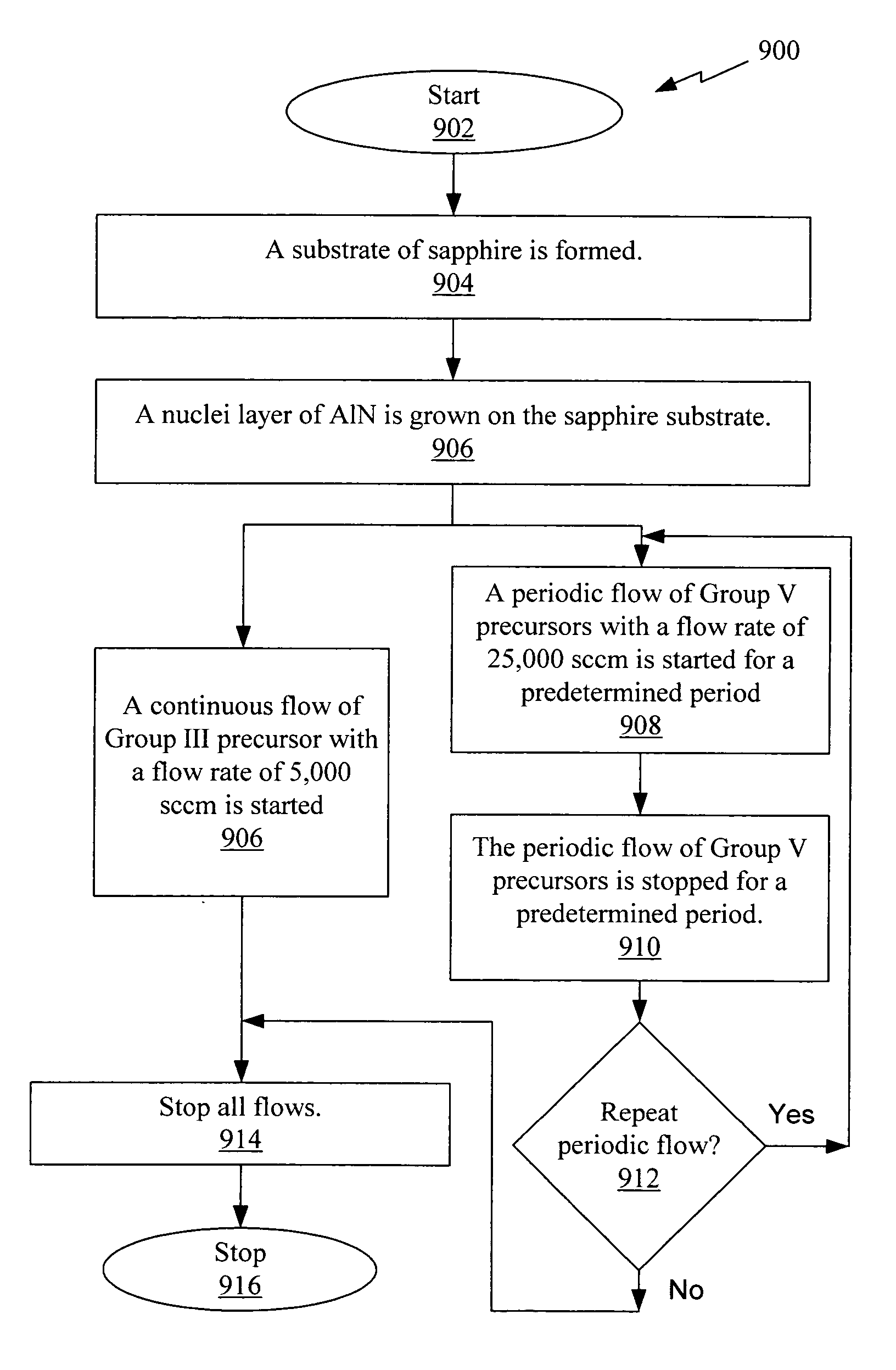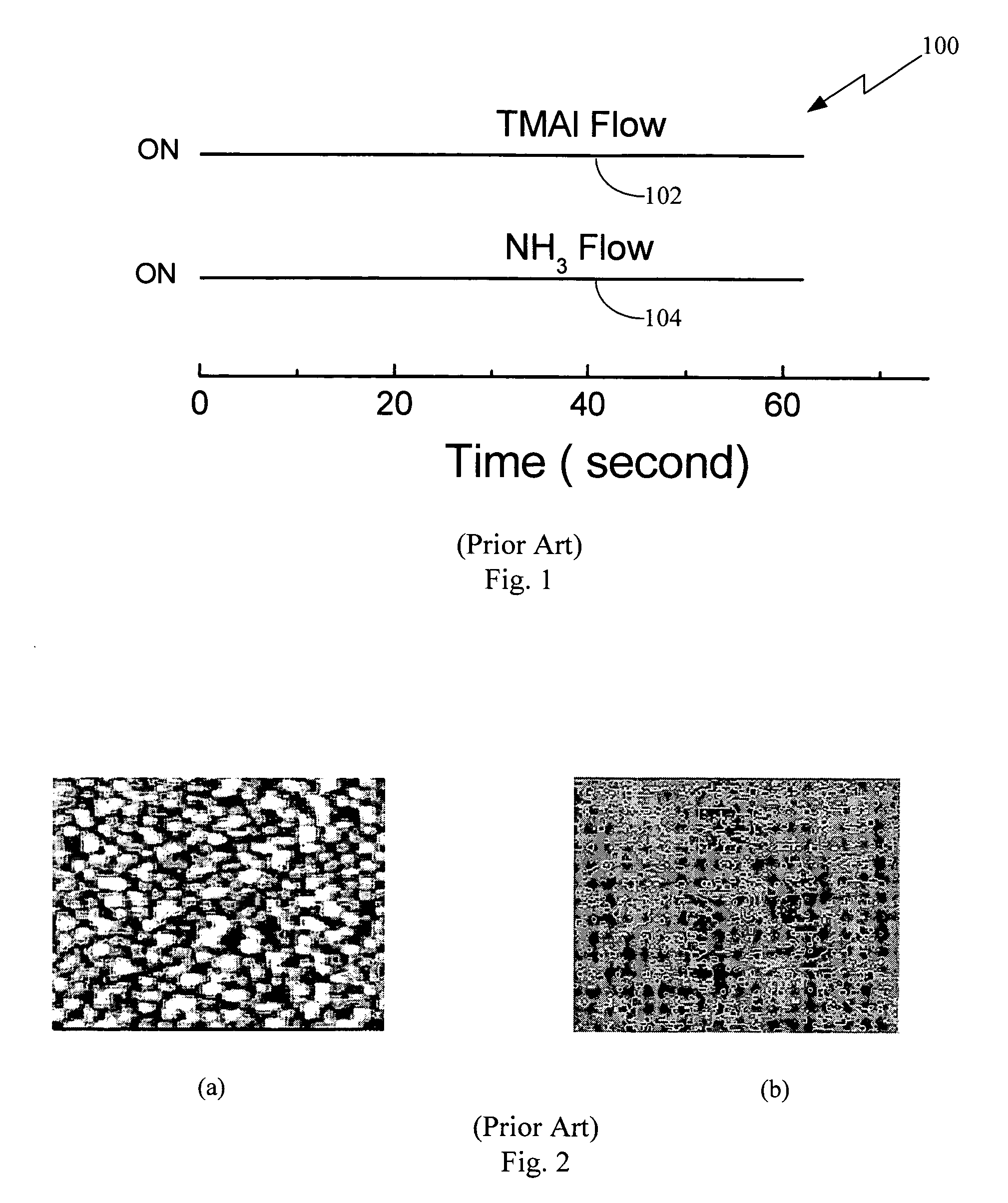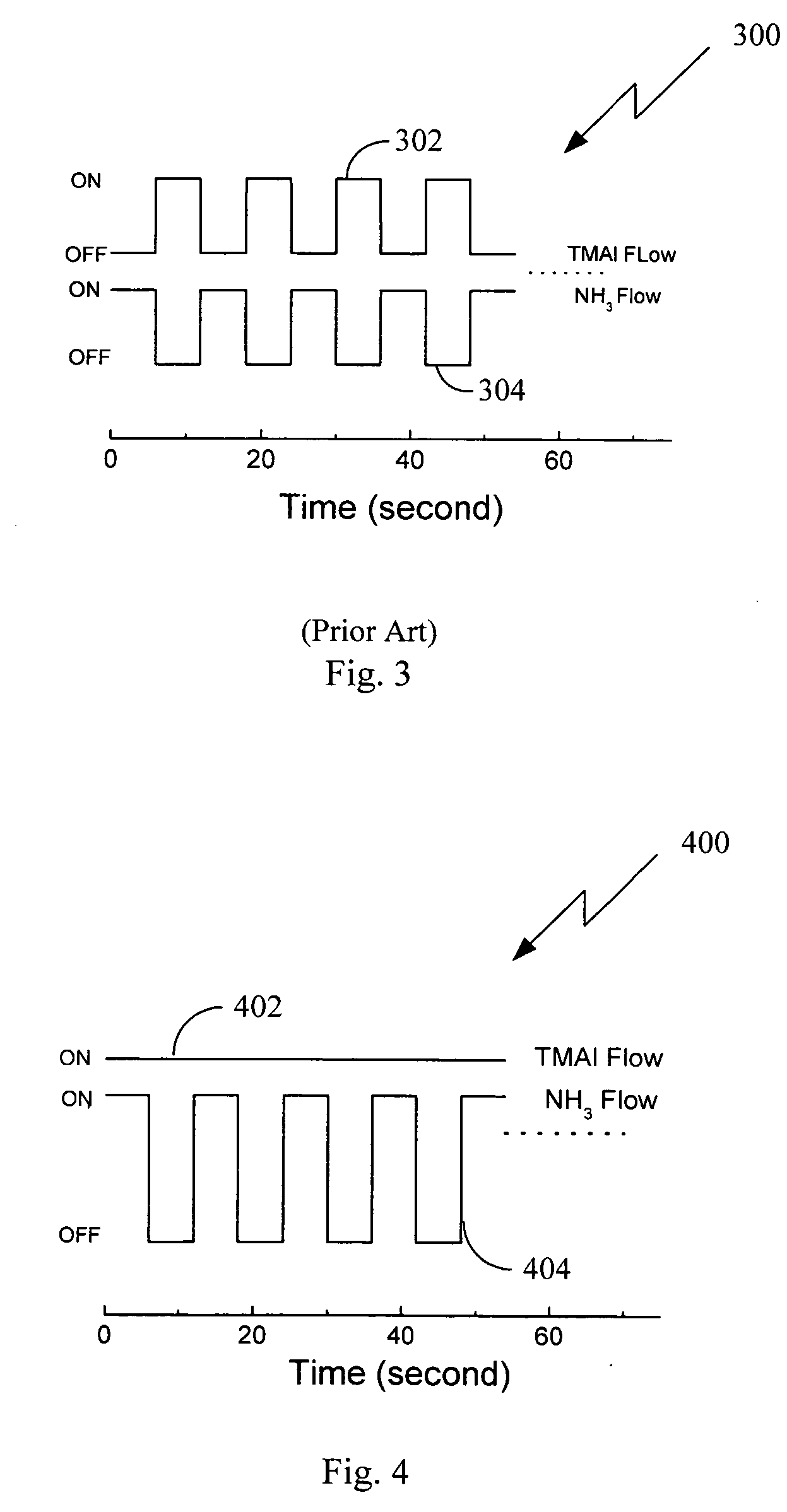Innovative growth method to achieve high quality III-nitride layers for wide band gap optoelectronic and electronic devices
- Summary
- Abstract
- Description
- Claims
- Application Information
AI Technical Summary
Benefits of technology
Problems solved by technology
Method used
Image
Examples
Embodiment Construction
[0023] In the following description of the preferred implementation, reference is made to the accompanying drawings that form a part hereof, and in which is shown by way of illustration a specific implementation in which the invention may be practiced. It is to be understood that other implementations may be utilized and structural changes may be made without departing from the scope of the present invention.
[0024] The present implementation has an epitaxy of atomic scale flattened HT-AlN epitaxial layer on a LT-AlN nuclei layer. Compared with those based on conventional grown HT-AlN buffer layers, high quality AlxGa1-xN epitaxial layers and much improved UV light emitters (UVLEDs) based on BME-grown HT-AlN on sapphire have been demonstrated.
[0025] In FIG. 4, a precursor flow chart of the BME growth in accordance with an implementation is shown. An LT-AlN nuclei layer (20˜100 nm) is grown on sapphire substrate at a low temperature range (500˜650 C.) by continuous growth. After the...
PUM
 Login to View More
Login to View More Abstract
Description
Claims
Application Information
 Login to View More
Login to View More - R&D
- Intellectual Property
- Life Sciences
- Materials
- Tech Scout
- Unparalleled Data Quality
- Higher Quality Content
- 60% Fewer Hallucinations
Browse by: Latest US Patents, China's latest patents, Technical Efficacy Thesaurus, Application Domain, Technology Topic, Popular Technical Reports.
© 2025 PatSnap. All rights reserved.Legal|Privacy policy|Modern Slavery Act Transparency Statement|Sitemap|About US| Contact US: help@patsnap.com



